China Airlines (CAL, 中華航空) has reduced the font of its name on the exterior of its new cargo aircraft to allow more space to highlight images that represent Taiwan, Minister of Transportation and Communications Lin Chia-lung (林佳龍) said yesterday.
Lin was asked about the new exterior design of the airline’s six Boeing 777F aircraft after Jordan Arens uploaded to Jetphotos, an aviation photography Web site, a photo of a CAL airplane taken on Tuesday at Snohomish County Airport in Everett, Washington.
Instead of “China Airlines” in the middle of the exterior, the name was painted close to the tail in a smaller font than previously used.
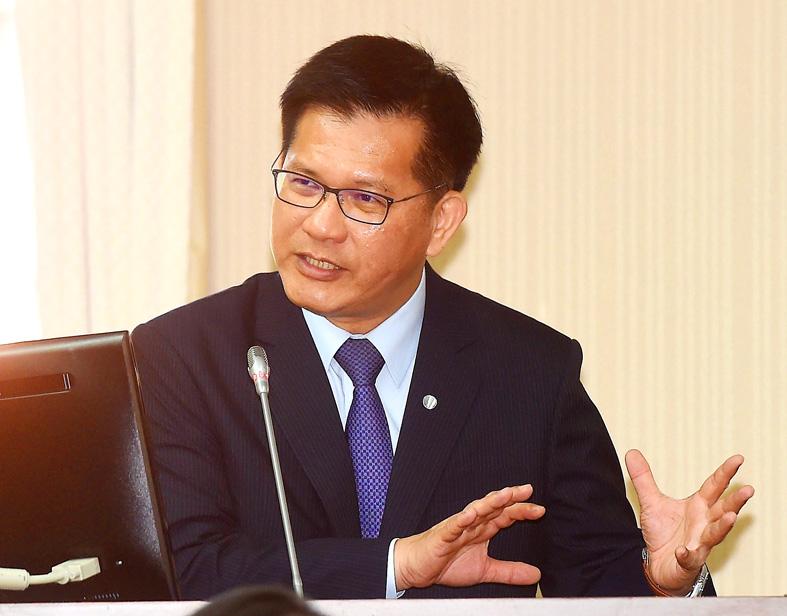
Photo: Chien Jung-fong, Taipei Times
“The airline is still testing the Boeing 777F cargo aircraft that it has purchased. The new aircraft would have more space on the exterior for us to highlight imagery representing Taiwan,” Lin said. “For now, we have reduced the font of the airline’s name. CAL will give an official explanation once the design and paintwork of the aircraft’s exterior are completed.”
The first of the six new aircraft is scheduled to arrive before the end of this year, the airline said on Wednesday.
Earlier this year, the government commissioned the airline to transport masks to other countries to help them contain the spread of COVID-19.
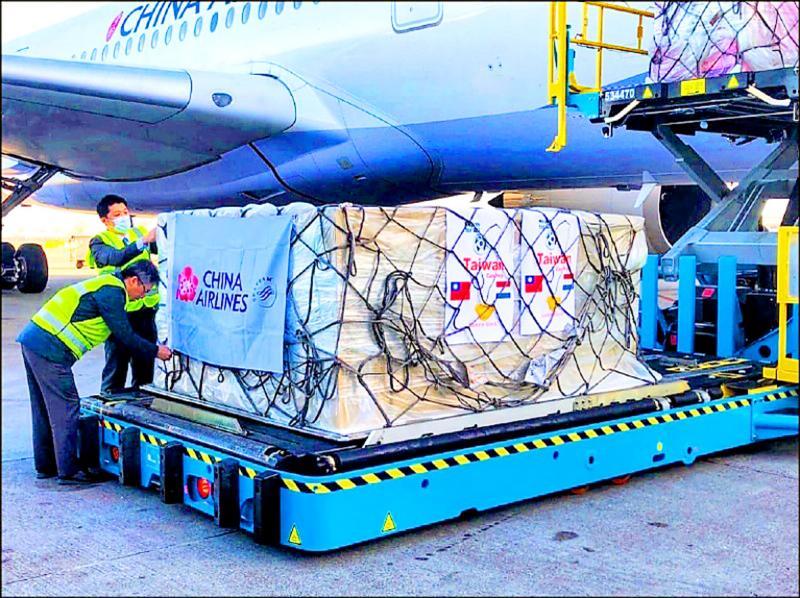
Photo taken from the Netherlands Trade & Investment Office Facebook Page
However, foreign media have mistakenly reported that it was a Chinese airline delivering the masks, prompting a debate over whether the airline should change its name in English so that such errors would not happen.
The legislature’s Transportation Committee in July passed a resolution requiring the ministry to stipulate medium and long-term plans to change the airline’s name in English as well as in Chinese.
The resolution also requires in the short term that it should consider redesigning the exterior of CAL aircraft by reducing the font of its name in English, and reinforcing “Taiwan” and imagery associated with the nation, provided that the new design would not involve renegotiating international aviation agreements.
In other news, Lin praised the Taipei City Government for offering additional subsidies to 100,000 tourists traveling to the city from next month through March 7.
Other cities and counties should follow suit, he said.
The ministry has rolled out a series of relief funds to the travel industry since the pandemic broke out at the beginning of this year, with some of the funds used to subsidize domestic tourists.
“We need local governments and travel service operators to contribute by subsidizing domestic tourists,” he said.
The Tourism Bureau on Wednesday announced the details of one of its plans to boost the domestic winter tourism market.
It would subsidize tourists aged 55 or older who travel to Taipei, New Taipei City, Taoyuan, Hsinchu City or Hsinchu County from Feb. 8 to Feb. 13, it said.
Average occupancy rates at hotels in the regions have declined by more than 30 percent amid the pandemic, it said.
People must travel by rail or bus to qualify for the subsidy, the bureau said.
Each person would receive a subsidy of NT$1,500 per night at a hotel, with the funds capped at NT$6,000 per person, it said.
Asked about the limited area and days for which the subsidies are valid for, Lin said that the plan is part of its latest relief package and mainly targets hotels with low occupancy rates, which are mostly in the north.
Hotels in central and southern Taiwan, as well as in Hualien, Taitung and outlying counties have fared relatively well, Lin said, adding that resources should be appropriated for creative travel programs, such as the one rolled out by the bureau on Wednesday.
“Tourists in the plan would be traveling in the opposite direction to most people, which would ease freeway traffic,” Lin said.
From next month to February, people on domestic tour groups would be eligible for winter travel subsidies as well, he said.
The Tourism Bureau expects a tourism rebound after spring, when the nation would begin administering COVID-19 vaccines, he said.
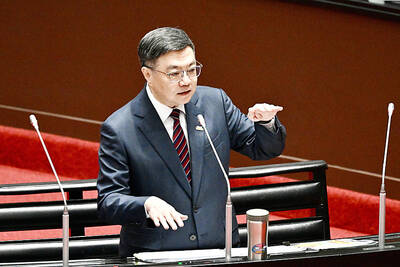
NATIONAL SECURITY: The Chinese influencer shared multiple videos on social media in which she claimed Taiwan is a part of China and supported its annexation Freedom of speech does not allow comments by Chinese residents in Taiwan that compromise national security or social stability, the nation’s top officials said yesterday, after the National Immigration Agency (NIA) revoked the residency permit of a Chinese influencer who published videos advocating China annexing Taiwan by force. Taiwan welcomes all foreigners to settle here and make families so long as they “love the land and people of Taiwan,” Premier Cho Jung-tai (卓榮泰) told lawmakers during a plenary session at the Legislative Yuan in Taipei. The public power of the government must be asserted when necessary and the Ministry of
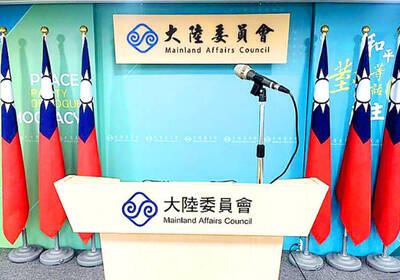
CROSSED A LINE: While entertainers working in China have made pro-China statements before, this time it seriously affected the nation’s security and interests, a source said The Mainland Affairs Council (MAC) late on Saturday night condemned the comments of Taiwanese entertainers who reposted Chinese statements denigrating Taiwan’s sovereignty. The nation’s cross-strait affairs authority issued the statement after several Taiwanese entertainers, including Patty Hou (侯佩岑), Ouyang Nana (歐陽娜娜) and Michelle Chen (陳妍希), on Friday and Saturday shared on their respective Sina Weibo (微博) accounts a post by state broadcaster China Central Television. The post showed an image of a map of Taiwan along with the five stars of the Chinese flag, and the message: “Taiwan is never a country. It never was and never will be.” The post followed remarks
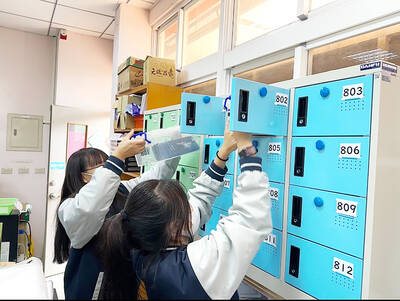
Proposed amendments would forbid the use of all personal electronic devices during school hours in high schools and below, starting from the next school year in August, the Ministry of Education said on Monday. The Regulations on the Use of Mobile Devices at Educational Facilities up to High Schools (高級中等以下學校校園行動載具使用原則) state that mobile devices — defined as mobile phones, laptops, tablets, smartwatches or other wearables — should be turned off at school. The changes would stipulate that use of such devices during class is forbidden, and the devices should be handed to a teacher or the school for safekeeping. The amendments also say

CONSISTENT COMMITMENT: The American Institute in Taiwan director said that the US would expand investment and trade relationships to make both nations more prosperous The US would not abandon its commitment to Taiwan, and would make Taiwan safer, stronger and more prosperous, American Institute in Taiwan Director Raymond Greene said. “The US’ commitment to Taiwan has been consistent over many administrations and over many years, and we will not abandon our commitment to Taiwan, including our opposition to any attempt to use force or coercion to change Taiwan’s status,” he said in an exclusive interview with the Liberty Times (the sister newspaper of the Taipei Times) on Friday last week, which was published in the Chinese-language newspaper yesterday. The US would double down on its efforts